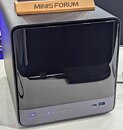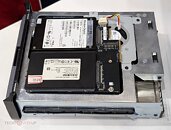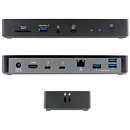GL.iNet Launches Flint 3: Tri-Band Wi-Fi 7 Home Router
GL.iNet, a leader in secure network solutions, is proud to announce the launch of Flint 3 (GL-BE9300), its first tri-band Wi-Fi 7 home router. Engineered for home users, remote workers, gamers, and small offices, Flint 3 delivers next-generation wireless performance with unmatched flexibility, speed, and control.
Next-Generation Wi-Fi 7 Performance
Flint 3 is powered by the latest Wi-Fi 7 technology, supporting Multi-Link Operation (MLO) across 2.4 GHz, 5 GHz, and 6 GHz bands. This dramatically reduces interference and latency by combining multiple wireless channels into a single stable connection. With max speeds of 688 Mbps (2.4 GHz), 2882 Mbps (5 GHz), and 5765 Mbps (6 GHz), Flint 3 ensures responsive, and constant connectivity, even in congested device environments.
Next-Generation Wi-Fi 7 Performance
Flint 3 is powered by the latest Wi-Fi 7 technology, supporting Multi-Link Operation (MLO) across 2.4 GHz, 5 GHz, and 6 GHz bands. This dramatically reduces interference and latency by combining multiple wireless channels into a single stable connection. With max speeds of 688 Mbps (2.4 GHz), 2882 Mbps (5 GHz), and 5765 Mbps (6 GHz), Flint 3 ensures responsive, and constant connectivity, even in congested device environments.

































































































